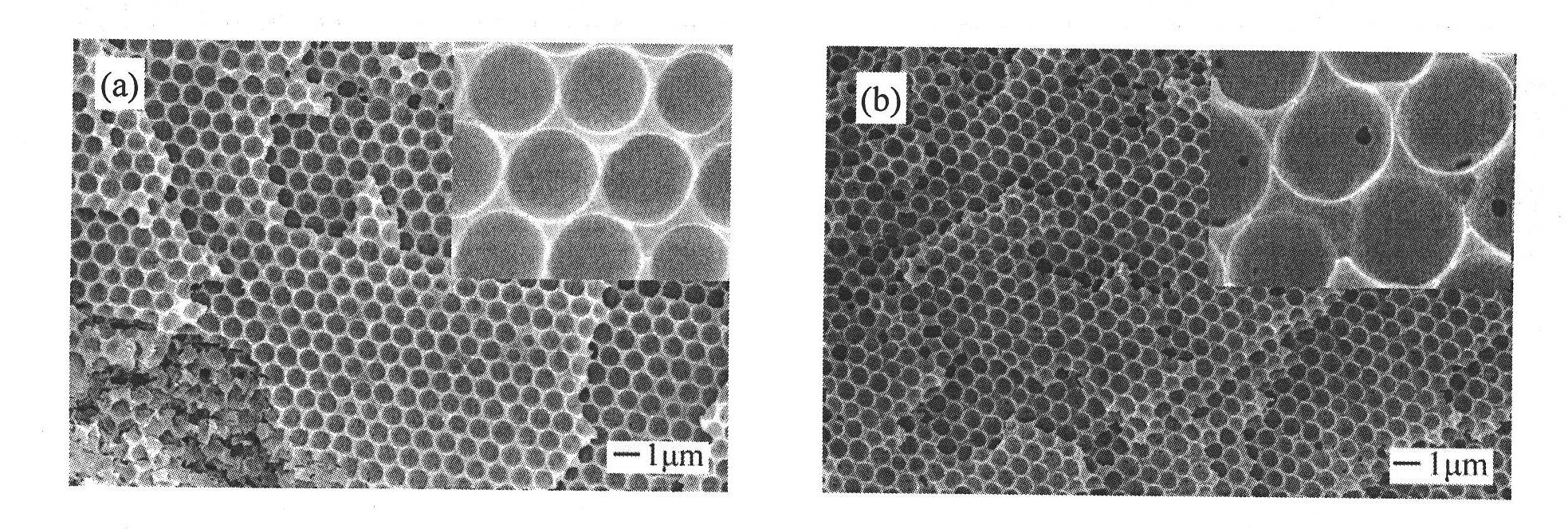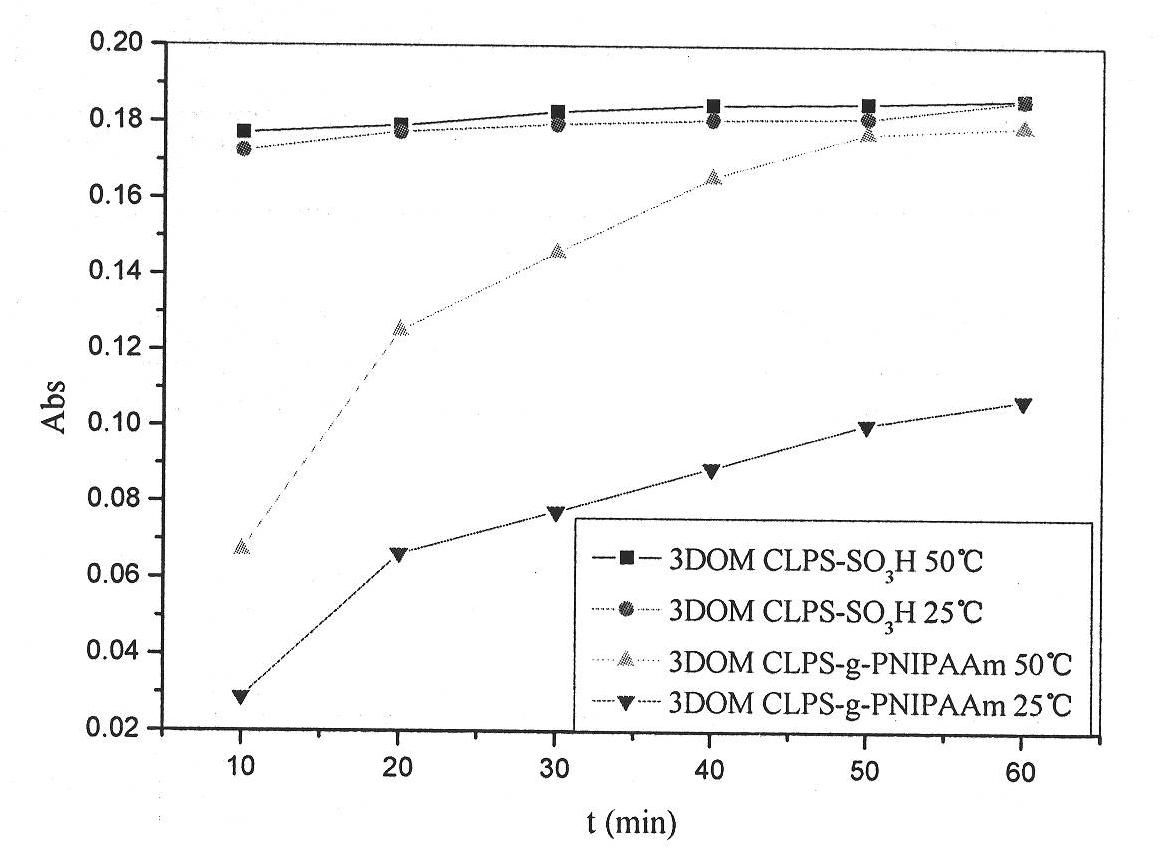Temperature-responsive three-dimensional ordered macroporous controlled-release material
A three-dimensional ordered, temperature-responsive technology, which is applied to medical formulations with non-active ingredients, immobilized on/in organic carriers, pharmaceutical formulations, etc. effect and other problems, to achieve the effects of high graft density, good controllable release, and good threshold flow effect.
- Summary
- Abstract
- Description
- Claims
- Application Information
AI Technical Summary
Problems solved by technology
Method used
Image
Examples
Embodiment 1
[0024] Preparation of responsive 3DOM CLPS-g-PNIPAAm material obtained by grafting poly-segments on 3DOM CLPS material with an average pore size of 500nm.
[0025] (1) Preparation of colloidal crystal templates with an average particle size of 660nm
[0026] At room temperature, 11 g of ammonia water with a concentration of 25% by mass, 70 g of absolute ethanol, 6.2 g of distilled water, and 3 g of ethyl orthosilicate were successively added into a three-necked flask. Stir until the mixed solution is a uniform and stable suspension, add an equal amount of ammonia water, absolute ethanol, distilled water and ethyl orthosilicate in the same mass ratio, repeat twice, pour the obtained suspension into a beaker, Stand still at room temperature to allow the solvent to volatilize completely to obtain a silica colloidal crystal template, which is placed in a sweet pot, sintered at 400°C in a horse-boiling furnace for 5 hours, and then slowly cooled to room temperature to obtain a coll...
Embodiment 2
[0034] Preparation of temperature-responsive 3DOM CLPS-g-PDMAA material obtained by grafting poly N, N-dimethylacrylamide segments on 3DOM CLPS material with an average pore size of 800 nm
[0035] (1) Preparation of colloidal crystal templates with an average particle size of 1100 nm
[0036] The other steps of the preparation method of the colloidal crystal template with an average particle diameter of 1100nm are the same as in Example 1 (1), and the change is that the number of repetitions is 3 times to obtain a colloidal crystal template with an average particle diameter of 1100nm silica microspheres adhered to each other ;
[0037] (2) Preparation of three-dimensional ordered macroporous cross-linked polystyrene material with an average pore size of 800nm:
[0038] Average pore diameter is that the preparation method other steps of 800nm three-dimensional ordered macroporous cross-linked polystyrene material are the same as embodiment 1 (2), what adjust is that adding ...
Embodiment 3
[0044] Preparation of responsive 3DOM CLPS-g-PNIPAAm material obtained by grafting poly-segments on 3DOM CLPS material with an average pore size of 800nm.
[0045] (1) Preparation of colloidal crystal templates with an average particle size of 1100 nm
[0046] The preparation method steps of the colloidal crystal template with an average particle diameter of 1100 nm are the same as in Example 2 (1).
[0047] (2) Preparation of three-dimensional ordered macroporous cross-linked polystyrene material with an average pore size of 800nm:
[0048] The steps of the preparation method of the three-dimensionally ordered macroporous cross-linked polystyrene material with an average pore diameter of 800 nm are the same as in Example 2 (2).
[0049] (3) Grafting of temperature-responsive polymer segments
[0050] The chlorine atom initiator is anchored on the pore wall surface of the three-dimensional ordered macroporous cross-linked polystyrene material through chloromethylation reacti...
PUM
| Property | Measurement | Unit |
|---|---|---|
| pore size | aaaaa | aaaaa |
| pore size | aaaaa | aaaaa |
| pore size | aaaaa | aaaaa |
Abstract
Description
Claims
Application Information
 Login to View More
Login to View More - R&D
- Intellectual Property
- Life Sciences
- Materials
- Tech Scout
- Unparalleled Data Quality
- Higher Quality Content
- 60% Fewer Hallucinations
Browse by: Latest US Patents, China's latest patents, Technical Efficacy Thesaurus, Application Domain, Technology Topic, Popular Technical Reports.
© 2025 PatSnap. All rights reserved.Legal|Privacy policy|Modern Slavery Act Transparency Statement|Sitemap|About US| Contact US: help@patsnap.com



